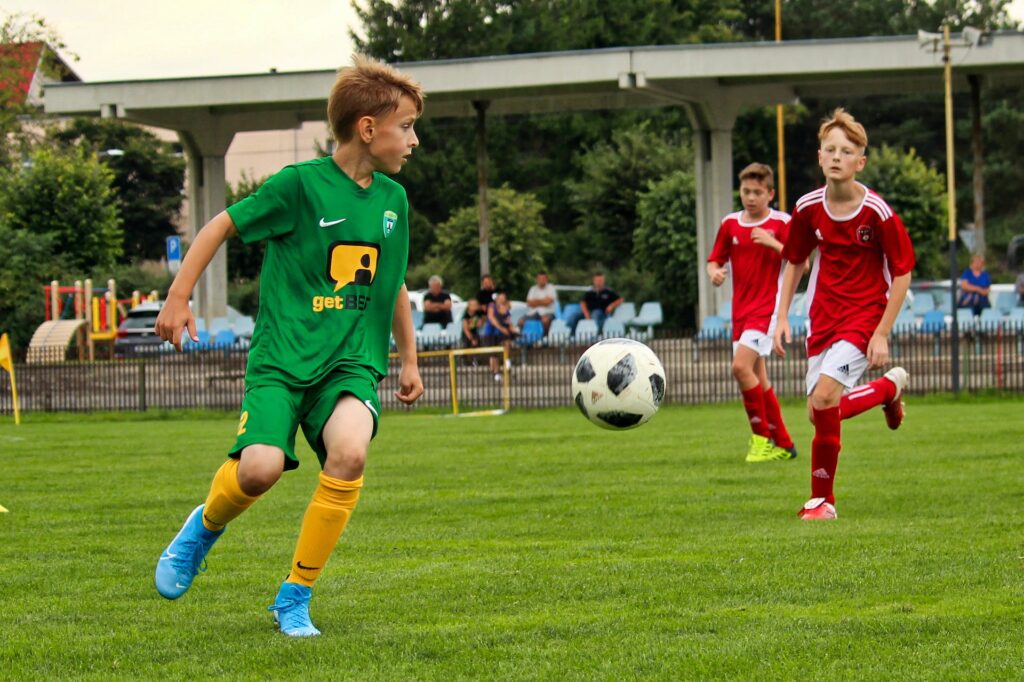Simplifying Tactics and Coaching: A Guide for Grassroots Football Coaches

Grassroots football coaches are instrumental in developing young players' skills, understanding of the game and love for football. However, they also take on the responsibility of building relationships with players and parents and ensuring the safety and well-being of everyone involved with their clubs.
By breaking down the various elements of tactics and coaching, grassroots football coaches can improve both their players and themselves. This guide to simplifying tactics and coaching includes tips and practical advice that can help coaches up their game.
Understanding Players
Tailoring tactics to suit the age group and skill level of players is essential in grassroots football. Younger players and those with less experience require a different approach compared to older or more skilled players. Coaches must adapt their tactics to ensure that they are easy to digest and beneficial for the development of their players.
Fostering a growth mindset in players is more beneficial than focusing solely on immediate results. This encourages resilience, continual learning and the understanding that skill and intelligence can be developed with effort and time.
Players become more receptive to coaching when they can see the long-term benefits. By emphasizing development and effort over winning, coaches can nurture mentally tough players who are more likely to succeed in the long term.
Understanding the Basics
The fundamentals of tactical planning in grassroots football involve establishing basic formations that are suitable for the team's skill level and experience. It's crucial to choose formations that the players can understand and execute effectively.
Common formations that suit grassroots teams include simpler setups like 4-4-2, which provides a balance between defence and attack, or 4-3-3, which allows for a more offensive strategy that can morph into 4-5-1 when a more defensive approach is necessary.
Adapting tactics to the players' strengths and weaknesses is another critical aspect. A grassroots football manager must be aware of what each player brings to the team and adjust the game plan accordingly. This could mean altering positions, responsibilities or even the formation itself to suit the attributes of the players. It's about making the most of what the team has and masking any deficiencies by tactical means.
Having the right tools to deliver the basics of tactical training is essential. Whether you use football tactics boards or digital tools, getting your message across concisely and precisely is essential.
Using In-Game Scenarios
Preparing for different in-game situations involves incorporating real-life match scenarios into training sessions. This approach ensures that players can experience and adapt to various game conditions in a controlled environment. Through scenario-based learning, players become more emotionally and tactically equipped to handle the pressures of a real match.
Developing a game plan with tools such as tactical clipboards is crucial, but communicating it effectively to the team is equally important. Coaches should break down the game plan into understandable parts and ensure that every player knows their role. Effective communication includes both verbal explanations and practical demonstrations during training to reinforce the tactics that will be used during the game.
Tactical Awareness
Structuring training sessions to improve tactical understanding involves designing drills that reflect the complexities of a match. Using phases of play, coaches can create realistic practices that simulate specific sections of a real game, focusing on both individual units and the team as a whole. This method enhances players' decision-making and positional awareness. Football training equipment such as cones, markers and football mannequins can make this process more effective.
Running drills that simulate match scenarios is essential for developing players' tactical awareness. This can include using small-sided games with portable football goals, which serve as an effective tool for conditioning while also enhancing sport-specific skills and team tactics [2]. Additionally, incorporating tactical games into training sessions can facilitate the development of a player's understanding of gameplay.
Effective Communication
Effective communication is crucial for coaches, as it’s the only way to convey tactical points to a grassroots team. Effective communication techniques include:
- Understanding your own communication style and biases to tailor your approach to different individuals
- Ensuring clarity by considering the terminology used, making it age and skill-appropriate
- Engaging in active listening and listening to players' feedback carefully
- Using body language effectively to reinforce the verbal message
- Building trust on the field through clear and consistent communication
- Demonstrating leadership qualities, including integrity, accountability motivational skills
- Setting an example off the pitch by fostering a culture of open communication and support
For the best results, record the details of your team meetings and one-on-one sessions with players. Use a dedicated football coaching folder to stay organised and keep everything in one place.
Utilising Setbacks and Successes
Both successes and setbacks can be useful learning experiences — but only if you maintain an organised and strategic approach.
Maintaining Confidence
After a defeat, encourage positive self-talk among team members and take inspiration from those who've overcome similar challenges to bounce back stronger.
Building Resilience
Boost confidence by focusing on strengths, learning from mistakes and preparing for future challenges.
Motivating Players
Motivate your team by setting clear goals, celebrating small wins and maintaining enthusiasm and a shared vision for success.
Recognising Effort and Achievement
Acknowledge both individual and team achievements, reinforcing a sense of purpose and contribution to the team's efforts.
Adapting Tactics
Use performance data and feedback to refine tactics and strategies and foster a culture of continuous improvement.
Creating a supportive environment where learning from every outcome is the norm can turn setbacks into valuable lessons and successes into player growth. Record your thoughts as and when they arise in a football diary or planner, and you’ll always have material to work with.
Start as You Mean to Go On
Take a more simple, strategic, organised approach to tactics and coaching, and you’re more likely to improve the players around you. Make the necessary changes today, and track your results as you go.

